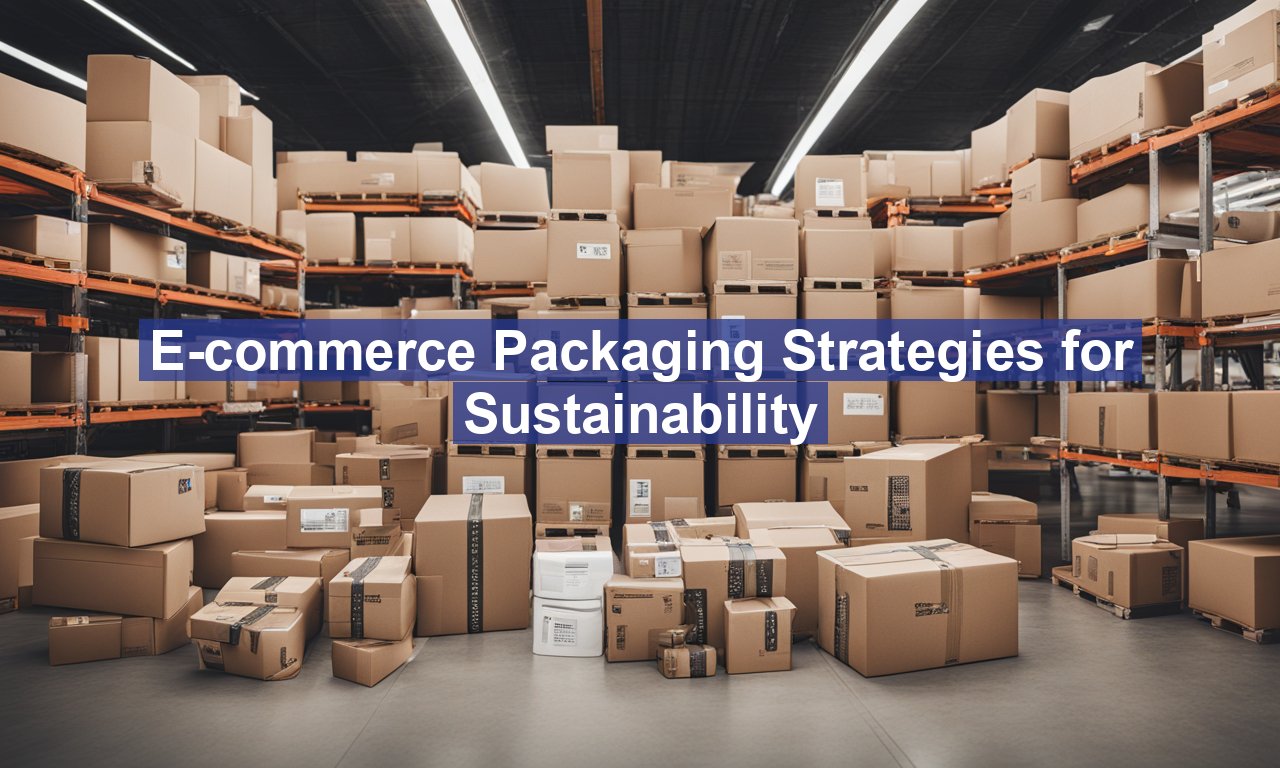E-commerce Packaging Strategies for Sustainability, Imagine opening a much-anticipated package from your favorite e-commerce store only to be inundated with layers of plastic, styrofoam, & other non-recyclable materials. It’s not only frustrating but also a stark reminder of the environmental impact that e-commerce can have. That’s where sustainable e-commerce packaging strategies come into play. In a world increasingly driven by online shopping, businesses are under pressure to adopt greener practices, reduce waste, and satisfy an eco-conscious customer base.
This article dives deep into actionable e-commerce packaging strategies that champion sustainability.
Why E-commerce Packaging Strategies for Sustainability Matters
Sustainable packaging isn’t just a trend; it’s a necessity for businesses looking to reduce their carbon footprint and appeal to environmentally conscious consumers. According to a survey by McKinsey, 65% of consumers said they want eco-friendly packaging options. The choices companies make today in packaging design, material, and supply chain management can significantly impact the environment and their brand reputation.
Choosing Eco-Friendly Materials
One of the foremost aspects of sustainable packaging is the use of eco-friendly materials. These can range from biodegradable plastics to recyclable paper and even innovative materials like mushroom-based packaging. Here are some popular options:
- Recycled Paper and Cardboard: Perfect for boxes and cushioning, these materials are easily recyclable and have a minimal environmental impact.
- Biodegradable Plastics: Made from natural substances rather than petroleum, these plastics break down faster and with less harm to the environment.
- Compostable Materials: These include plant-based materials like cornstarch and bamboo, which decompose completely and enrich the soil.
- Mushroom Packaging: An innovative option using agricultural waste and mycelium, the root structure of mushrooms, which is 100% biodegradable.
For more detailed insights on innovative sustainable materials, check out this article
Minimizing Packaging Waste
Reducing the sheer volume of packaging can have a notable impact. Minimizing waste involves more than just using less material; it’s about intelligent design and thought-out packaging processes. Here’s how you can achieve this:
- Right-Sizing Packaging: Ensure that the packaging fits the product snugly, reducing the need for excess filler materials. Right-sizing not only saves materials but also reduces shipping costs.
- Multi-Use Packaging: Encourage customers to repurpose packaging by using materials and designs that can serve a secondary purpose, like storage or decoration.
- Eliminate Unnecessary Packaging: Question every piece of packaging your company uses and eliminate those that don’t serve a functional purpose.
- Use Digital Solutions: Implement digital invoices and manuals instead of paper ones to further reduce paper waste.
Innovative Packaging Designs
Design plays a crucial role in sustainable packaging. More intelligent design means better efficiency and less waste. Some groundbreaking design strategies include:
- Flat-Pack Designs: Inspired by IKEA, these designs save space and materials and often mean fewer emissions during shipping.
- Modular Packaging Systems: Use standardized modules that can be combined like building blocks, providing flexibility while reducing the variety of materials needed.
- Recycled and Upcycled Packaging: Utilize post-consumer waste or upcycle materials that have already served another purpose.
Looking for design inspiration? Check out this comprehensive guide on sustainable packaging.
Implementation and Supply Chain
Implementation of sustainable packaging goes beyond selecting materials and design; it requires an overhaul of the supply chain to ensure sustainability goals are met. Key tactics include:
- Collaborate with Green Vendors: Partner with suppliers who are committed to sustainable practices.
- Optimize Transportation: Reduce the carbon footprint by optimizing shipping routes and consolidating shipments.
- Educate and Train Staff: Ensure that everyone from procurement to warehousing is educated on the importance of and techniques for sustainability.
To dive deeper into supply chain sustainability, you can read more from the experts at GreenBiz.
Consumer Engagement
In today’s market, consumers not only appreciate but actively seek out brands committed to sustainability. Engaging with your customer base on your sustainable practices can boost loyalty & enhance your brand photo. Here’s how:
- Transparency: Stay open about your sustainability efforts & challenges. Transparency fosters trust.
- Certification Labels: Use eco-certifications and labels to assure consumers that your packaging meets certain environmental standards.
- Customer Education: Inform customers about how they can recycle or repurpose your packaging materials.
- Feedback Mechanism: Actively seek customer feedback on your packaging and make adjustments based on their input.
Conclusion
Sustainable e-commerce packaging is not merely a buzzword but a responsible choice that benefits both businesses and the planet. By opting for eco-friendly materials, minimizing waste, and adopting innovative designs, companies can significantly reduce their environmental impact while also meeting consumer demands for greener alternatives. Integrating these strategies involves considerable effort and commitment but offers substantial long-term rewards, including cost savings, improved brand image, and a healthier planet. As you look to step up your sustainable packaging game, remember that every small change contributes to a larger impact. For further reading on sustainable packaging strategies, visit reputable sources such as Environmental leader and GreenBiz.


